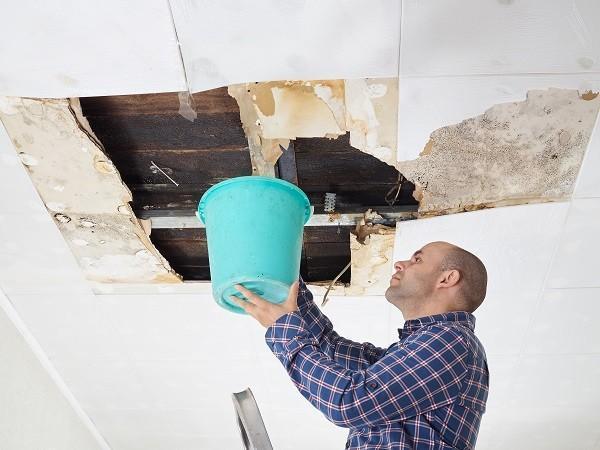With an obvious water disaster, such as a burst pipe, homeowners spring into action. But small leaks can go undetected, causing significant damage. Learn the causes and signs of quiet leaks and how water damage affects your home over time.

What Happens to Water Damage Over Time?
If left unchecked, small leaks can have big consequences. Exposure to water damages carpets, walls, electronics and furniture. It can leave mold behind that requires expensive repairs. Here is what happens with untreated water damage.
- Damaged belongings: Depending on the size of the leak, it can soak through walls, floors and soft furnishings. Water causes wood door and window frames to swell and makes paint and wallpaper blister.
- Mold: It takes just 24-48 hours for mold to develop on a surface exposed to water. Unless you eliminate the source of moisture, the mold will continue to grow. Mold grows on porous or organic materials like wood, drywall, fabric, insulation, carpets and plants. Potential health hazards linked to mold include respiratory problems, nasal congestion and runny or irritated eyes.
- Damaged ceilings: A discolored ceiling or one that is cracked or bulging is a sign of a leak. A wet ceiling could lead to damaged lights or ceiling fans.
- Electrical issues: If water collects around light fixtures or outlets, it can lead to corrosion, an electrical short or a fire.
Common causes of water leaks included toilet leaks, corroded pipes, clogged drains and high water pressure.
What to Do if You Have a Water Leak

Water damage can linger long after the leak stops, so it’s important to act fast. According to SERVPRO, experts in water damage restoration, here is what to do if you find a water leak.
- Stop the water: Eliminate the source of the water by turning off the water to the affected area, fixing leaks in windows or cleaning gutters.
- Turn off the power: When it is safe to do so, turn off circuit breakers for wet areas of the home. Don’t enter areas with wet electrical equipment.
- Mop up water: Use towels, a mop or wet vac to remove as much water as possible.
- Get expert help: Cleaning up after a leak often involves mold remediation. Exposure to mold can cause health issues, such as allergy-like symptoms. For that reason, the Environmental Protection Agency recommends using contractors to clean a moldy area larger than 10 square feet.
How Water Damage Restoration Works
Here is how a water damage restoration company handles cleanup after a leak. For example, SERVPRO’s water damage restoration process has several steps.
- Home assessment: Inspectors come to your home to assess the damage and create a plan of action.
- Water removal: If needed, specialists use specialized pumps and extraction units to speed up drying time.
- Material removal: Contractors remove damaged drywall, carpeting or furnishings.
- Cleaning, sanitizing and deodorizing: Depending on the source of the water, leaks can expose surfaces to bacteria or mold. Specialists use proprietary equipment, techniques and cleaning products to sanitize hard surfaces.
- Additional drying: If needed, specialists use dehumidifiers and other drying equipment to remove moisture you can’t see.
- Repairs and construction: The last step is to restore your home to its original condition. If contractors removed carpeting, drywall or other components, they will repair or rebuild the affected areas.
Will Insurance Cover Water Damage Repairs?
Homeowners insurance covers some types of water damage, but it depends on the cause. American Family Insurance explains that sudden accidental causes, such as when a pipe bursts or ice from the roof seeps into your home, are likely covered. But home insurance doesn’t cover persistent leaks that cause damage over time, or problems caused by maintenance issues. Regular home insurance doesn’t cover floods. For water damage from flooding, you’ll need separate coverage from the National Flood Insurance Program.
Address Leaks Promptly
Small leaks can grow into big problems, so inspect your home periodically for musty smells, water stains or bubbling paint. If you find signs of a leak, take immediate action to eliminate the water source, remove moldy materials and repair your home.





